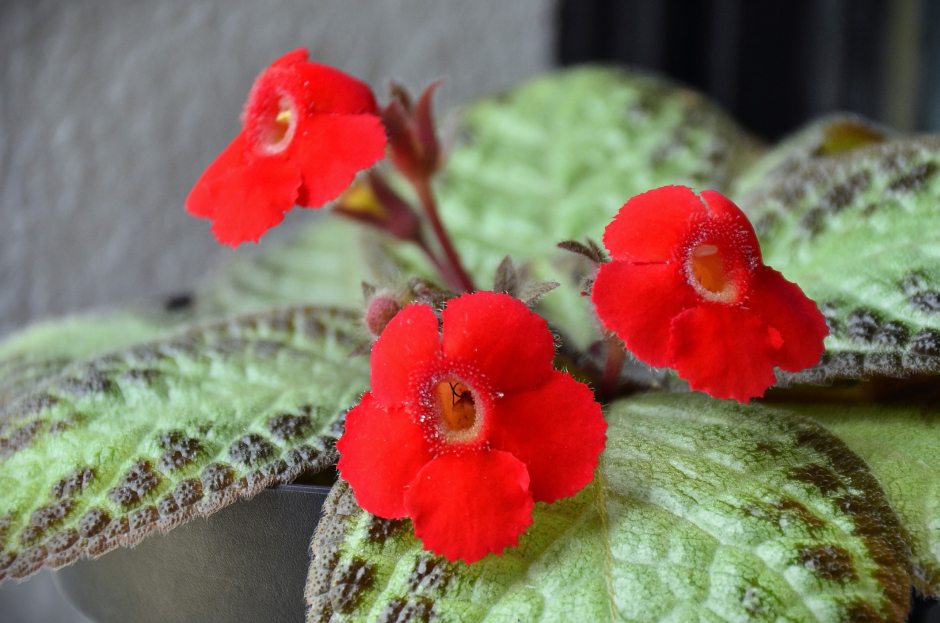
Episcia spp., or Flame Violets, are stunning tropical plants known for their vibrant, textured foliage and small, cheerful flowers that come in shades of red, orange, pink, and purple. As close relatives of African violets, they share similar care needs — but with their trailing growth habit and bold, patterned leaves, they offer a unique twist to your indoor garden. Whether you're an experienced houseplant enthusiast or a beginner looking for something eye-catching, Episcias are a rewarding, beautiful addition to your collection. Let’s dive into how to care for these colorful charmers!
Episcias love bright, indirect light. A spot near an east or north-facing window is perfect — they’ll get enough light to keep their foliage vibrant without risking leaf burn from harsh direct sun. If you’re growing them under artificial lights, fluorescent or LED grow lights work well too. Avoid placing them in deep shade, though, as low light can cause leggy growth and fewer blooms.
Like African violets, Episcias prefer consistently moist (but not soggy) soil. Water them when the top half-inch of soil feels dry to the touch. Be careful not to let water sit on their fuzzy leaves, as this can cause rot or unsightly spots. Bottom watering — where you let the pot sit in a dish of water for 10-15 minutes to soak up moisture from below — is a safe and effective method. In winter, when growth slows, let the soil dry out a little more between waterings.
Episcias are tropical plants, so they adore warm temperatures and high humidity. Aim for temperatures between 65-80°F (18-27°C) and keep them away from drafts or cold windows. Humidity should be around 50-60% — if your home is dry, especially in winter, consider placing a small humidifier nearby or setting the pot on a tray of water and pebbles to boost humidity. Their velvety leaves will thank you!
A light, airy, and well-draining potting mix is essential for Episcias. An African violet mix works perfectly, or you can create your own blend using peat moss, perlite, and vermiculite. Ensure the pot has drainage holes to prevent excess water from sitting at the bottom, which can lead to root rot.
Feed your Episcia with a balanced, water-soluble houseplant fertilizer diluted to half strength every 2-4 weeks during spring and summer. Avoid over-fertilizing — too much nitrogen can lead to lush foliage at the expense of flowers. In fall and winter, you can cut back on feeding, as the plant’s growth naturally slows.
Episcias grow quickly and can become a bit wild if left unchecked — but that’s part of their charm! Trim back leggy stems to promote bushier, fuller growth. Pinch off spent flowers to encourage more blooms. If your plant sends out runners (stolons), you can let them trail for a cascading look or snip and propagate them (more on that next!).
One of the joys of growing Episcias is how easily they propagate! Their runners produce baby plantlets, which you can root in soil or water. For soil propagation, simply press a runner into moist potting mix, and it’ll root in a couple of weeks. Once it’s established, snip it from the parent plant. You can also root leaf cuttings or stem tips for more plants to share with friends!
Good news — Episcia spp. are non-toxic to cats and dogs! They’re a safe, colorful option for pet-loving plant enthusiasts.